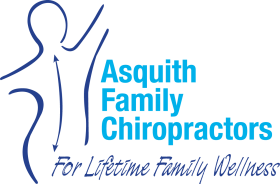As our families march towards the beginning of a new school year, we focus on development, concentration, and how we can best support children in these areas.
5-10% of school-age children will present with a learning difficulty, and as primary health care practitioners working with children and families, we are afforded the opportunity to work with them in improvement of these concerns. The research shows us that we require full engagement in our environment, utilising all of our senses and the ability to quickly interpret them to maximise our learning. A key finding is that a lack of eye tracking and accomodation skills may impact significantly on our reading and possibly the memory of what has been read.
A lack of movement in the cervical spine resulting in decreased mechanoreceptor input can be a component of decreased neurodevelopment of the brain. This can initially present in our smallest children with head/neck fixation or feeding issues. We know that having an ease of movement, dexterity and posture in early childhood can lead to improvements in our schooling years.
Theory of Engagement
The ability for children to be engaged in their lives, at school and at home is essential for a happy and productive childhood. Difficulties in completing new tasks and skills or remembering and understanding new concepts will create difficulties at school, but the effects of it can truly manifest into all areas of the child’s life; and flow on into adulthood.
Much of our ability to learn in the classroom, social situations, and life comes down to us being able to engage in our situation completely; with all the information in our surrounds being perceived by our senses and interpreted quickly and accurately. When this does not happen easily it affects our perception of situations spatially, cognitively and even socially, making it more difficult and requiring more ‘brain power’ to analyse problems and information. This will leave less focus available to us, thus affecting our concentration. Healthy neurological function in areas that affect learning and problem solving such as; eye tracking and accommodation (reading), balance (calculating and thinking whilst weight bearing), walking (thinking and walking), and spatial awareness (comprehension and listening whilst on the move) can potentially make things much simpler.
A child who, for example, has poor eye tracking and eye accommodation skills may have great eyesight, but not an easy ability to recognise and determine the shapes that form letters and sentences across a page, finding it more challenging to learn to read, correctly interpret meaning, or even remember what has been read. Due to the drain that this constant effort and lack of ease has on their mental resources, this child may additionally find it impossible to do this whilst trying to write or follow verbal instructions simultaneously.
It is not known exactly what causes neurodevelopmental challenges, however it appears to be a flow of events beginning from the prenatal and the preconceptive period. The maternal stress response is strongly linked to emotional and cognitive problems (Talge et al., 2007), as is nutritional deficiencies, paternal age and health at conception, foetal alcohol syndrome and environmental toxins. In practice, we may notice birth trauma and sub-clinical vertebral joint dysfunctions affect the ease and function of the cerebellum and its neurological development.
It is thought that lack of stimulation to the thalamo-cortical structures through decreased mechanoreceptor input from the spine will affect motor and cognitive development in the child (Melillo & Leisman, 2009). The majority of the mechanoreceptors in the spine are in the upper cervical region, and segmental blockage can significantly affect the proprioceptive input, and therefore neurodevelopment of the brain.
Our posture, dexterity, and developmental ‘skill’ of today has evolved from the ease of mobility and neurological health and maturity of our childhood. As chiropractors, we appreciate that spinal health in children (and adults) is more than how far they can turn their heads or how they are feeling; they are creating a platform from which their lives will unfold.
Happily, as chiropractors we are well positioned to assist with spinal joint dysfunctions and the effect on the nervous system. Careful analysis of the kinesiology, myotomes, and neurology of the spine will reveal areas that are likely to be affecting input to the cortex. In children with neurodevelopmental challenges, a cranial strain is often involved, creating dural torque, which may negatively affect the overall tone.
Fascinatingly, current thinking suggests that much of the prenatal genetic and even environmental factors are less important than proper input from the spine to the brain (Melillo & Leisman, 2009). A sedentary lifestyle – inside, sitting down, watched rather than played out, coupled with altered spinal health can possibly be having more of an impact than is truly appreciated. All the more reason for us to focus on doing what we do so well!
If you would like your child assessed, please give us a call at:
Asquith Family Chiropractors
59 Edgeworth David Avenue Waitara NSW
9477 1905
References
1. Talge, N.M. et al. (2007). Antenatal Maternal Stress and Long Term Effects on Child’s Neurodevelopment; How and Why? The Journal of Child Psychology and Psychiatry, 48(3/4), 245-261. doi: 10.1111/j. 1469-7610.2006.01714.x
2. Melillo R., Leisman G., (2009). Neurobehavioural Disorders of Childhood, an Evolutionary Perspective. New York :Springer Science + Business Media. Pages 1-9.
Article written by Dr Edwina Waddell, Chiropractor

